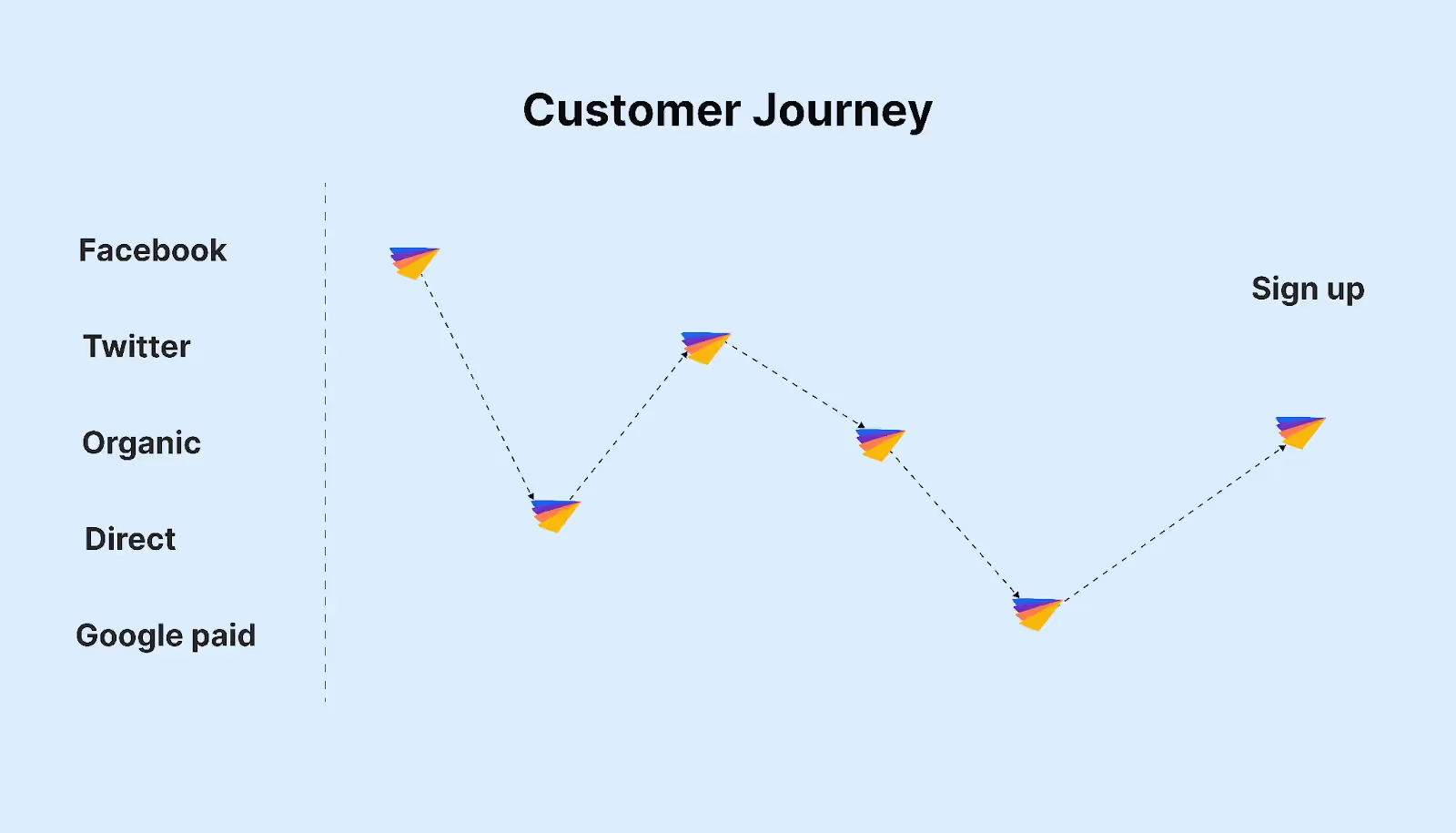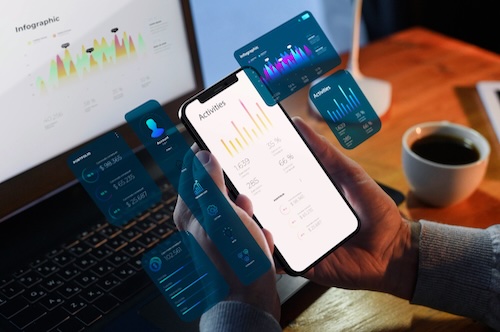The global influencer marketing market skyrocketed to a staggering $21.1 billion in 2023, more than tripling its value since 2019. This explosive growth highlights influencer marketing's ascent as a pivotal component of digital marketing strategies.
Understanding its evolution is crucial for grasping its impact on return on investment (ROI). Once focused primarily on boosting brand visibility, influencer marketing now plays a key role in driving measurable business outcomes.
The Early Days: Awareness and Engagement
Initial Focus on Brand Awareness
In its nascent stages, influencer marketing was primarily focused on increasing brand visibility. Early campaigns often involved celebrity endorsements and social media shoutouts, leveraging the star power of well-known figures to enhance brand recognition. These strategies aimed to capture the attention of large audiences, fostering initial engagement and interest. For instance, brands like Pepsi and Nike utilized celebrities to create a buzz around their products, significantly boosting their brand awareness.
The Shift Towards ROI
As digital marketing evolved, there was a growing need for brands to see tangible returns on their marketing investments. This led to a shift from focusing solely on engagement metrics, such as likes and shares, to incorporating conversion metrics that directly impact the bottom line. Brands began to demand more precise measurements of success, seeking to understand how influencer marketing efforts translated into actual sales and revenue growth. This transition marked a critical turning point in the industry, emphasizing the importance of ROI in influencer marketing strategies.
Advancements in Measurement Techniques
Introduction of Advanced Analytics Tools
The evolution of influencer marketing has been significantly bolstered by the introduction of advanced analytics tools. These tools and technologies have enhanced the ability to measure the effectiveness of influencer marketing campaigns more precisely. With the advent of sophisticated data analytics, brands can now track a wide array of metrics, from initial engagement to final purchase, thereby driving more informed decision-making processes. Platforms such as Google Analytics, social media analytics tools, and specialized influencer marketing software have become essential in providing deep insights into campaign performance.
Metrics Beyond Engagement
Beyond the traditional engagement metrics like likes, shares, and comments, new metrics have emerged to provide a more comprehensive evaluation of influencer marketing campaigns. These include conversion rates, which measure the percentage of viewers who take a desired action; customer acquisition cost (CAC), which calculates the cost of acquiring a new customer; and customer lifetime value (CLV), which estimates the total revenue a business can expect from a single customer account. These metrics are crucial in assessing the true impact of influencer marketing efforts, enabling brands to understand not just the reach and engagement but also the direct financial return and long-term value generated by their campaigns.
The Rise of Multi-Touch Attribution
Multi-touch attribution determines the value of each customer touchpoint leading to a conversion. Its goal is to identify which marketing channels or campaigns should receive credit for conversions, ultimately guiding future spending to acquire new customers more effectively.
This process involves analyzing a conversion event, such as a customer signing up for a free trial, and evaluating the role each touchpoint played in that sign-up.

Imagine a customer journey graphic displaying various touch points influencing the sign-up process. For example, should the Facebook ad that initiated the customer journey receive more credit than the Google paid-search ad?
In basic terms, multi-touch attribution answers this by considering the cost of each touchpoint and the weight (importance) assigned to its stage in the customer journey. It then compares this relationship to the value of the conversion it contributes to, such as how much the free trial contributes to revenue. While the formulas can become complex and delve into data science, understanding this basic relationship is crucial.
To grasp multi-touch attribution better, compare it to other common models like last-touch attribution and first-touch attribution.
Why Multi-Touch Attribution is a Game-Changer for Influencer Marketing
Understanding Attribution Models
Attribution models are essential for understanding which marketing efforts lead to customer conversions. There are two primary types:
- Single-Touch Attribution:This model assigns credit for a conversion to a single touchpoint in the customer journey. The two main types are:some text
- First-Touch Attribution: Gives credit to the first interaction a customer has with your brand.
- Last-Touch Attribution: Credits the final interaction before the conversion.
- Multi-Touch Attribution: This model distributes credit across all touchpoints that influenced the customer’s decision, providing a holistic view of the customer journey.
Importance of Accurate Attribution in Measuring Marketing Effectiveness
Accurate attribution is crucial for measuring the effectiveness of marketing efforts. It helps marketers understand which channels and strategies are driving conversions, allowing for more informed decision-making and better allocation of resources.
Limitations of Single-Touch Attribution
While single-touch attribution models are simple and easy to implement, they have significant limitations:
Drawbacks of First-Touch and Last-Touch Models in Capturing the Full Customer Journey:
Single-touch models often oversimplify the customer journey. They ignore the influence of intermediate touchpoints that can be crucial in nurturing and converting a customer.
For example, a first-touch model might credit an initial ad click for a conversion, ignoring the impact of follow-up emails, retargeting ads, or influencer endorsements. Similarly, a last-touch model might give all the credit to a final interaction, such as a discount offer, without recognizing the importance of earlier interactions.
Benefits of Multi-Touch Attribution
Multi-touch attribution models have become essential for marketers, particularly those aiming to measure the impact of digital campaigns. Unlike traditional aggregate methods like media mix modeling, multi-touch attribution offers a more detailed, person-level perspective.
One of the main benefits of multi-touch attribution is its ability to provide visibility into the effectiveness of touchpoints throughout the entire customer journey. This is crucial as consumers are becoming increasingly skilled at ignoring marketing messages. To succeed, marketers must use data-driven strategies to deliver personalized messages on the right channel at the right time. The granular data from multi-touch attribution allows marketers to identify and understand audience behavior across channels, tailoring their approaches to meet specific marketing needs.
Beyond enhancing the consumer experience, multi-touch attribution also boosts marketing ROI by highlighting where spending is most and least effective. This insight enables marketers to allocate resources more efficiently, potentially shortening sales cycles by delivering fewer but more impactful marketing messages.
Understanding Attribution Models
It's important to note that not all attribution models are multi-touch. Multi-touch models evaluate and weigh the impact of multiple touchpoints. In contrast, single-touch attribution models, such as first-touch and last-touch, only consider either the initial or final interaction before a conversion. This limited view overlooks the full range of touchpoints engaged throughout the sales cycle, offering a less comprehensive understanding of the customer journey.
By leveraging multi-touch attribution, marketers can gain a deeper, more accurate view of their campaigns' effectiveness, ultimately leading to more informed decisions and better marketing outcomes.
Impact on Influencer Marketing
Holistic View of Influencer Impact
Multi-touch attribution provides a comprehensive view of how different influencers contribute to the customer journey. Rather than attributing the success of a conversion to a single influencer, this model recognizes the role of each influencer interaction in the overall process. This holistic perspective helps marketers understand the collective impact of various influencers, leading to more accurate assessments of their effectiveness.
Improved ROI and Budget Allocation
By identifying which influencers and touchpoints are most effective at different stages of the customer journey, marketers can allocate their budgets more strategically. Multi-touch attribution highlights where marketing spend is yielding the highest returns and where it might be falling short. This insight allows for better investment decisions, ensuring that funds are directed towards influencers who drive the most value.
Enhanced Campaign Optimization
With multi-touch attribution, marketers can fine-tune their campaigns based on detailed insights into influencer performance. Understanding the specific contributions of each influencer enables marketers to optimize their strategies, such as adjusting the timing and content of influencer engagements to maximize impact. This data-driven approach leads to more effective and efficient campaigns.
Personalized Consumer Engagement
Multi-touch attribution allows marketers to see how different influencers affect various segments of their audience. This knowledge can be used to tailor influencer marketing strategies to better meet the preferences and behaviors of different customer groups. Personalized engagement increases the likelihood of conversions and fosters stronger relationships between the brand and its audience.
Shortened Sales Cycles
By identifying the most impactful touchpoints in the customer journey, multi-touch attribution helps streamline the path to purchase. Marketers can focus on the influencers and interactions that move customers through the sales funnel more quickly, reducing the time and effort required to achieve conversions. This efficiency not only improves the customer experience but also accelerates revenue generation.
Data-Driven Decision Making
Multi-touch attribution provides the granular data needed for informed decision-making. Marketers can leverage this data to make strategic adjustments in real time, responding to what’s working and what isn’t. This agility is particularly valuable in the dynamic field of influencer marketing, where trends and consumer preferences can shift rapidly.
How to Use Phyllo’s Measurement APIs to Maximize Your Marketing Campaigns
The major strength of Phyllo’s measurement APIs lies in their ability to provide multi-touch attribution. Unlike other tools that offer basic attribution models, Phyllo allows marketers to understand the impact of each digital channel and touchpoint throughout the consumer journey.
By integrating Phyllo’s suite of measurement APIs, your platform gains the necessary tools to accurately measure influencer marketing and optimize your campaigns effectively. Here’s how Phyllo offers a comprehensive and advanced approach to measurement:
Multi-Touch Attribution
Phyllo’s APIs enable multi-touch attribution, providing a detailed view of how each touchpoint contributes to conversions. This insight is crucial for optimizing marketing strategies and improving ROI.
Website Analytics
Get insights into how influencers drive traffic to your site without being blocked by ad-blockers. Phyllo’s measurement APIs ensure you have accurate data on website activity, including impressions, engagements, and hard click data.
Advanced Features with Phyllo’s Measurement APIs
- Chrome Browser Data: Phyllo’s APIs gather data from Chrome browsers, ensuring comprehensive coverage of user interactions.
- Attribution APIs: These APIs help you track the effectiveness of each touchpoint across the customer journey.
- Topics APIs: Gain insights into trending topics and how they influence consumer behavior.
- Audience APIs: Understand your audience better by analyzing their interactions across multiple channels.
Data Integration and Accuracy
Phyllo’s APIs provide pre-built integrations and browser data, capturing website activity, impressions across channels, time-stamped data, video views, and IP addresses. This extensive data collection enables accurate measurement and analysis.
Campaign Tracking
Track the success of influencer campaigns by stitching together information from different links. Phyllo’s measurement APIs allow you to monitor campaign links, ensuring you have a complete picture of your marketing efforts.
Identity and Device Tracking
Phyllo ensures accurate identity tracking, even if users switch devices or channels. By understanding how people interact with influencers and brands across different devices, you can optimize your strategies for better engagement and conversions.
Promo Codes
Generate and track promo codes linked to influencer campaigns to identify which ones are driving sales. This feature helps you measure the direct impact of influencer marketing on revenue.
Network Analysis
Phyllo’s APIs help identify how different touchpoints, such as social media posts, affect an individual’s decision to purchase a product or service. This network analysis provides deeper insights into the customer journey.
Comprehensive Attribution Models
Phyllo uses different models to determine the most important touchpoints in the customer journey for your brand. This approach ensures that you understand the full impact of each marketing effort.
Developer-First Solution
Phyllo’s measurement APIs are designed to seamlessly integrate with influencer marketing platforms. This API-first approach simplifies your workflow, allowing you to build superior features without setbacks.
Extensive Coverage
Phyllo provides coverage across multiple social platforms, devices, and networks, ensuring comprehensive data collection and analysis.
Why Build with Phyllo?
- Seamless Integration: Phyllo’s APIs integrate smoothly with your existing systems, enhancing your measurement capabilities.
- Competitive Advantage: Build measurement solutions that go beyond what the market offers, giving you a competitive edge.
- Customizable Models: Easily modify attribution models to suit your specific needs and customer preferences.
Want to see Phyllo’s measurement APIs in action? Get in touch with our expert team to schedule a demo and discover how Phyllo can elevate your marketing campaigns.
Know more about Phyllo Measurement API
Conclusion
Adopting multi-touch attribution can transform your influencer marketing strategy by providing a more accurate picture of how various touchpoints and influencers contribute to conversions. This leads to more informed decisions, optimized marketing spend, and ultimately, a higher return on investment.










